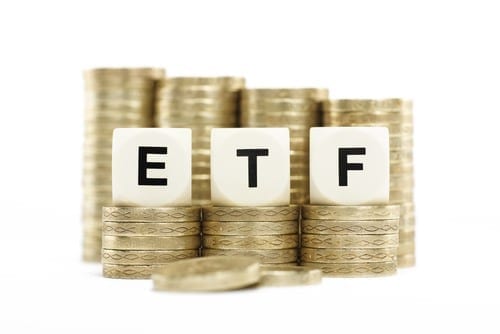Have you ever wanted to trade an asset that would provide you with a diversified portfolio during uncertain times? If the answer is yes, then an exchange-traded fund is the right instrument for you. An exchange-traded fund (ETF) is a security that provides you with exposure to different assets. As of 2020, there were more than 7,600 ETFs traded globally. Investing with these types of assets can give you access to both passively managed ETFs and actively managed ETFs. You can also design different trading strategies using ETFs that can be used in uncertain times.

What is an ETFs
An ETF is a financial instrument that is traded on an exchange hence the name exchange-traded fund. The asset can hold various tradable instruments, including stocks, bonds, commodities, and indices. If you want exposure to the different stock sectors, such as the financial and energy sectors, you can purchase an ETF. For example, the Energy Select Sector Fund ETF holds various stocks that have exposure to the energy markets. Some of the shares held by the ETF include large-cap integrated energy companies like Exxon Mobile, as well as oil services companies like Schlumberger. The fund also owns oil and gas producers like Williams Companies.
When Were ETFs Introduced?
The first exchange-traded fund was traded more than 30-years ago in 1990. The first U.S. ETF was introduced in 1993 and tracked the movements of the S&P 500 index. The SPY (S&P 500 SPDR) became very popular and is still one of the most actively traded ETFs.
What are the Benefits of ETFs
There are several benefits of using ETFs to diversify your portfolio. ETFs differ from mutual funds in that you can buy and sell and exchange-traded funds throughout the trading session. If the price of the underlying assets is not cooperating with your investment strategy, you can stop out of an ETF instead of waiting for the end of the trading session to close out with a loss.
ETFs are generally tax-friendly investments. Mutual funds generally issue capital gain payouts to investors at the end of every calendar year due to redemptions. ETFs minimize capital gains by performing a like-kind exchange of stock which reduces the tax burden. As opposed to mutual funds, there are usually no investment minimums. ETFs are a lower-cost alternative. While the average mutual fund has a fee of 1%, most ETFs have an expense ratio between 0.3 and 0.95%.
How Can You Use ETFs
When you invest with ETFs is provides a type of exposure that is different. You can use the ETF to gain exposure to an underlying instrument or use it to hedge the direction you have in your portfolio. You can also use ETFs to pair trade the market taking a neutral market position.
Here are some examples.
Say you are a portfolio manager that concentrates on technology stocks. Before an adverse move, you might consider selling an ETF that focuses on the technology sector, like the Technology Select Sector SPDR (XLK). The investment moves in tandem with the price of several public trading stocks in the technology sector. The goal for the portfolio manager would be to offset some of the losses that might occur with gains in a short position of the XLK.
Another way you might consider using an ETF is to trade one that holds products that are unavailable using stocks. For example, if you want to trade the oil price, an ETF only has oil futures. The same can be said for gasoline or corn, or silver.
Additionally, you might decide that you want to take a market-neutral position and use ETFs to offset the risks. Market neutral risk is a risk where you are not exposed to the market’s general direction but instead speculate on the outperformance of one asset relative to another. These trades are often called pair trades. An example would be taking a long position in financial stocks because you think interest rates will move higher but offsetting that risk with a short-position in utilities. Your stockbroker or your CFD broker offers these types of trades.
The Bottom Line
The upshot is that ETFs are a diverse financial instrument that offers several different ways to create exposure to the capital markets. Recall, an ETF is an exchange-traded fund that has stock-like features. The most important is that you can enter and exit intra-day, differing from mutual funds.
ETFs can provide you with a security that tracks the movements of a group of stocks or a single commodity. There are also sector ETFs which help you take advantage of owning a diversified group of stocks. You can use an ETF to hedge your exposure by selling it short. You can also take a market-neutral position where you are long one ETF and short another ETF. Your ability to purchase defensive stock ETF as well as use ETF to generate market-neutral trades is why ETF can be used as a safe-haven asset in uncertain times.
 2018 ·
2018 ·
Leave a Reply